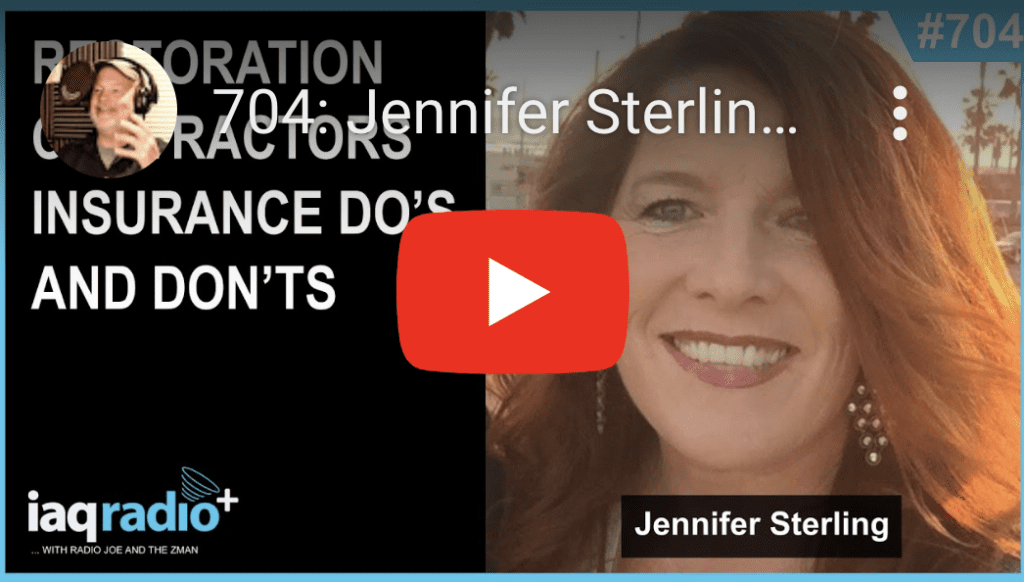Resource Library
IAQ Radio: Restoration Contractors Insurance Do’s and Don’ts
Overview
IAQ Radio welcomes Jennifer Sterling to discuss Restoration Contractors Insurance Do’s and Don’ts.

IAQ Radio welcomes Jennifer Sterling to discuss Restoration Contractors Insurance Do’s and Don’ts. Many of the lessons learned will be applicable to any type of contractor and even consultants. Jennifer Sterling has been an Environmental Insurance broker for over 15 years, serving all lines of insurance needs.
Jennifer knows the insurance risks and exposures in this ever-changing industry, specific to the scope of operations that include but are not limited to fire, water, mold remediation, smoke, dry outs, contents clean-up, hazardous transporting, crime scene clean-up, consulting, sampling, air testing, and asbestos remediation. Jennifer prides herself on attending several trade shows annually and acknowledges the men and women that help to hold the industry to a higher standard while promoting continued education and accreditation.
